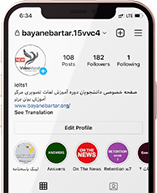Emotional intelligence isn't your ticket for acing the SATs, but it is what will shape you into a functional, sympathetic, well-adjusted human adult. EQ, as it's casually called, is the ability to identify and manage your emotions and the emotions of others. If all you know is "happy," "sad," and "angry," then buckle up for an EQ crash course. You'll feel some feels and thank us later.
Can You Feel It?
EQ is the underrated, outcast sibling constantly overshadowed by the book-smart IQ. But it shouldn't be. In 2016, Fast Company called EQ one of the fastest growing job skills, and that hiring managers value it more than IQ. According to the World Economic Forum's Future of Jobs Report, emotional intelligence will be one of the top 10 job skills in 2020. What's all the hubbub over being emotionally in-tune? People with EQ better understand and sympathize with others, making them better, more thoughtful team players.
Boosting your EQ may mean stepping outside your comfort zone a bit. For example, until recently, a long-held assumption stated that all emotions fell into one of six larger emotion buckets: happiness, sadness, anger, surprise, fear, and disgust.
According to a 2017 study by University of Berkeley researchers, that's pretty far from reality. The researchers identified not six, but 27 distinct emotions. Take note, here they are: amusement, awkwardness, adoration, admiration, joy, awe, craving, aesthetic appreciation, calmness, entrancement, nostalgia, confusion, anxiety, fear, horror, disgust, sexual desire, romance, anger, pain, sadness, surprise, relief, excitement, interest, satisfaction, and boredom. Wow, the movie "Inside Out" was woefully incomplete.

Emotionally 1,2, 3
Now that you understand the importance of EQ, let's dive into how we can make the world a more emotionally intelligent place, shall we? Neuroscientist and psychologist Lisa Feldman Barrett laid out three steps to boosting your intelligence in her book "How Emotions Are Made: The Secret Life of the Brain." Here they are, summed up in neat packages:
- Recognize a wide array of emotions.This something Barrett calls "emotional granularity." If all you're able to identify is "me happy" and "me sad," all you'll ever feel is happiness or sadness. Once you give the 27 emotions (and more! Why not?) the credit they deserve, you'll begin exploring the granularity of the feels. In Barrett's words, "your brain would have many more options for predicting, categorizing, and perceiving emotion, providing you with the tools for more flexible and functional responses." That's a good thing.
- Learn new words for specific emotions.Norwegians have a word for intense joy of falling in love: "forelsket." If you're thinking that is just a fancy way to say ecstatic, consider this. Would you equate "regret" with "heartache"? Of course not. Yet both of those words roll up into "sadness." Once you learn new words for specific emotion, you can keep expanding your emotional granularity.
Barrett writes, "You've probably never thought about learning words as a path to greater emotional health, but it follows directly from the neuroscience of construction. Words seed your concepts, concepts drive your predictions, predictions regulate your body budget, and your body budget determines how you feel. Therefore, the more finely grained your vocabulary, the more precisely your predicting brain can calibrate your budget to your body's needs. In fact, people who exhibit higher emotional granularity go to the doctor less frequently, use medication less frequently, and spend fewer days hospitalized for illness."
- Create new emotions.Who says you can't? If you don't have a word for a certain feeling you experience, naming it can make it real, thus expanding your emotional granularity even further. Where does it end?! Words are constructed, all words. Listen to your body when you notice the feels; don't necessarily depend on a dictionary to tell you what's happening.
Sympathetic: دلسوز / غمخوار
Identify: تشخیص دادن
Buckle up: آماده شدن
Underrated: کم ارزش
Outcast: رانده شده / مطرود
Sibling: خواهر و برادر
Constantly: مداوم / پیوسته
Overshadowed by: تحت الشعاع قرار دادن / سایه انداختن
Hubbub: غوغا / هیاهو
Boost: بهبود بخشیدن
Assumption: فرض / گمان
According to: طبق...
Distinct: متمایز / مجزا
Adoration: تقدیر / ستایش
Admiration: تحسین
Aesthetic: زیبایی شناسی
Boredom: خستگی
Woefully: اسفناک / اندوهناک
Dive in/into something: کاری را با عجله شروع کردن
Lay out: مرتب کردن
Sum up: خللاصه کردن
Neat: مرتب / منظم
A wide array of: طیف وسیعی از
Perceive: درک کردن / فهمیدن
Roll up: جمع کردن و گرد کردن
Neuroscience: علم عصب شناسی
Determine: مشخص کردن / تعیین کردن
Finely grained: بیشتر
Precisely: دقیقا
Calibrate: تعدیل ردن / تنظیم کردن
Exhibit: به نمایش گذاشتن / نمایش دادن
Hospitalized: بستری شده
Depend on: بستگی داشتن





